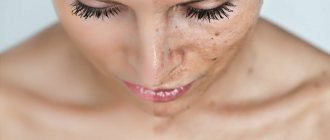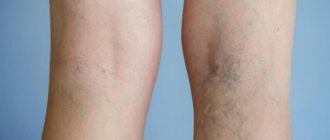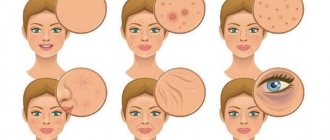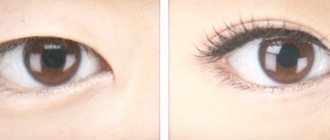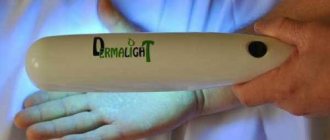Swelling after blepharoplasty is a natural side effect that is typical for any surgical procedure. The procedure itself is aimed at solving aesthetic problems in the periorbital zone (congenital and acquired).
During the process, the surgeon makes one or more incisions with a scalpel, removes excess skin and fatty tissue, and finally applies sutures. During the rehabilitation period, swelling occurs, often accompanied by the appearance of bruises. This phenomenon lasts 7-10 days, but due to individual characteristics or due to incorrect work carried out by a specialist, it may not go away much longer.
Causes
Skin tightening involves breaking the integrity of the dermis and soft tissues underneath, resulting in damage to the vascular network, resulting in swelling and bruising.
They can appear even after endoscopic surgery - several punctures are enough to develop a side effect.
The correction area is particularly sensitive and has a congestion of blood vessels - they are damaged during the operation.
Compression of the venous tissue and capillaries occurs, as a result of which the outflow of lymph is disrupted. Also, the walls of blood vessels become more permeable; fluid from them actively exits into the intercellular space and accumulates in it.
With transconjunctival blepharoplasty, the side effect is less noticeable. This is due to the method of performing the operation - an incision is made on the inside of the eyelid (on the mucous membrane).
This method is considered less traumatic, however, this procedure has a number of limitations and is indicated if it is necessary to correct a moderate problem.
How to reduce the consequences
To minimize the problem, it is necessary to follow all the doctor’s prescriptions and recommendations before the procedure.
- Avoid alcohol. Drinking alcoholic beverages provokes dehydration of the body, as a result of which a person begins to feel thirsty and drink large amounts of water.
- Eliminate salt from your daily diet - it stops the removal of fluid by binding water molecules together.
But even in this case, it will not be possible to completely avoid swelling.
Causes of edema depending on location
The skin on the eyelids is the thinnest, making it too vulnerable. After plastic surgery, swelling and hematomas may occur in this area.
Swelling usually occurs due to injury to tissues, where fluid subsequently accumulates. When the normal functioning of the circulatory system in the eyelid area is restored, fluid is gradually removed from the body.
Under the eyebrow
It should be noted that in the area of the upper eyelids the skin is thinnest .
When performing blepharoplasty under the eyebrows, the swelling is not too pronounced, but has its own characteristics. You will have to cover the swelling with sunglasses for a long time. In the lower area of the eyebrows, the blood supply is not as intense as in other parts of the body, so the process of tissue regeneration takes quite a long time. The minimum is one month. To improve the situation, cold can be applied to the upper eyelid area.
On the mucous membrane of the eye
If the eyelid closes poorly, the mucous membrane of the eye dries out, for this reason it is not washed sufficiently with tears. This problem can cause discomfort to the patient. To eliminate this complication, you need to seek help from a specialist. There is nothing you can do about it, but you need to re-do blepharoplasty.
Formation zone
On the lower eyelids
After blepharoplasty of the lower eyelids, swelling lasts, on average, about a week.
It is almost impossible to avoid the phenomenon due to the sensitivity of the skin around the eyes and the peculiarities of the anatomical structure of this area. In some cases, especially with the classical correction method, swelling may spread to a larger perimeter, reaching up to the cheekbone.
On the upper eyelids
The symptoms are less severe, but the rehabilitation period increases.
This is due to the fact that the connective tissue of the upper eyelid is not as actively supplied with blood than the lower eyelid. In some cases, eye asymmetry may occur. There may be several reasons.
- Varying degrees of surgeon intervention due to different initial characteristics of the eyelids. If it was necessary to remove a larger number of subcutaneous hernias in one eye, then the severity of the edema will be more noticeable.
- Low tone of the eye muscles and non-simultaneous healing of the suture.
How to relieve swelling after blepharoplasty with medications
Swelling and hematoma after surgery only increase in the first two days. At the same time, the eyelids itch because the incision line is healing. To prevent tissue infection, the doctor prescribes antibiotics. To eliminate discomfort associated with itching, bruising and swelling - ointments: Hydrocortisone, Lokoid, Liaton, Traumeel, Sinyakoff. The main thing is that the patient is not allergic to the components of the medications, otherwise the swelling will become even worse.
Ointment for bruises should be applied once or twice a day, without stretching the skin of the eyelids and without getting on the mucous membrane. The course of treatment is one week.
Additionally, from the first day you can take Traumeel tablets for puffiness under the eyes after blepharoplasty. They consist of plant components and have a diverse effect, significantly improving the condition.
How long does swelling last?
The swelling goes away in about 2 weeks.
In some cases, recovery may take much longer. This is due both to the individual characteristics of the client and to contraindications not identified during preparation. Among them are problems with the urinary and cardiovascular systems.
The length of the rehabilitation period depends on several factors.
- Type of surgery . In the case of classical exposure and a sufficiently large volume of work, swelling, accordingly, can last more than 14-16 days. Transconjunctival plastic surgery or sutureless technique is characterized by a low degree of swelling due to less trauma during surgery.
- Age . As the skin ages, regenerative processes in connective tissue cells also slow down. In young people, recovery is much faster.
- Individual characteristics . If the patient's skin is highly dense, then the swelling will last much longer. When the vessels are close to the surface of the dermis, swelling and bruising occur.
- Skin type . A more sensitive and thin structure is characterized by a rapid recovery period due to a dense network of blood vessels. However, in this case, swelling is always accompanied by hematomas formed during internal hemorrhage.
- Pronounced subcutaneous tissue . The tumor lasts a long time and differs in the intensity of its manifestation (since the subcutaneous tissue is abundantly supplied with blood).
A systematic change in the degree of swelling is also considered normal. So, in the morning it can be stronger than in the evening. This is due to the fact that during sleep a person is in a horizontal position, as a result of which the process of lymph outflow is inhibited. This is why many experts recommend resting on a high pillow at night.
The degree of swelling by day with the recommendations of plastic surgeons
| Day | Progress and expert advice |
| 1 | The first manifestation of swelling. It can be observed both immediately after the operation and after some time. The necessary procedures are performed by a nurse in the hospital. At home, you need to reduce physical activity as much as possible, use prescribed medications and apply cold compresses. |
| 2 | The swelling appears gradually. It reaches its peak in the late afternoon. At this time, antiseptic patches or a sterile bandage are placed on the eyes of the operated person in the suture area. Additionally, a bruise appears that can reach the cheekbones. |
| 3-4 | The level of fluid in the intercellular space decreases. It is recommended to try to blink as little as possible. It is permissible to take a not too hot bath so that water and shampoo do not come into contact with the eye area. |
| 5-7 | By the end of the week, the severity visually decreases. If non-absorbable material is applied, the sutures are removed. The antiseptic patch is removed. |
| 10 | Symptoms practically disappear, only barely noticeable swelling remains. It is allowed to use contact lenses and watch TV, as well as moderate computer work. |
| 14-20 | Appearance returns to normal. In rare cases, slight asymmetry may be visible. The use of decorative cosmetics is allowed after the second week of the rehabilitation period (preference should be given to products for sensitive skin). |
| 20-60 | The symptom goes away completely. It is possible to resume your normal lifestyle. The surgeon may prescribe physical procedures. |
Doctor's advice
From the table you will find out how long swelling lasts after blepharoplasty, as well as what advice the doctor gives. Daily instructions on how to relieve swelling after eyelid surgery are gradually becoming less stringent.
| Number of days | Doctor's recommendations |
| 1 | In hospitals, procedures must be performed by a nurse. At home, it is necessary to reduce activity as much as possible, apply cold and treat the skin with special preparations. |
| 3 | It is allowed to take a shower and wash your hair without getting shampoo and water in your eyes. Frequent blinking should be avoided. |
| 6 | Medical stickers or stitches are removed. The swelling (normally) begins to subside. At this stage, not following the doctor’s recommendations can significantly aggravate the situation. |
| 10 | It is allowed to resume using contact lenses and start working on a PC, but without overworking. |
| 14 | You can apply eye shadow and mascara, but only those intended for sensitive skin. |
| 15-60 | You are allowed to sleep in any position and gradually increase physical activity. The surgeon prescribes physiotherapy sessions and medications. |
How to reduce swelling yourself
To relieve eye swelling after blepharoplasty or to make it less pronounced, an effective method of preparing for the session has been developed. To begin with, 7 days before surgery, you need to quit smoking and drinking alcohol. You should stop taking blood thinners (anticoagulants) in advance. Reduce salt intake: it helps retain moisture in tissues. Also, contact only qualified surgeons who are proficient in the latest methods of atraumatic correction with minimal likelihood of complications.
Cold in the form of ice is the most powerful anti-inflammatory agent. Doctors recommend treating the wound with cold almost immediately after the end of anesthesia. In this case, you should not bow your head or suddenly change the temperature of the affected area. During the first 48 hours, ice packs help reduce pain after upper eyelid blepharoplasty and the swelling itself. Ice is applied to the cheeks and eyelids, at intervals of 30 minutes while awake, and kept for 20 minutes - the skin should become cool to the touch. Cold is not applied at night.
Here are some rules to help reduce swelling:
- do not drink alcohol, do not smoke - especially carbonated alcoholic drinks are prohibited;
- avoid any physical stress, rest more, relax - at first you should not lift weights exceeding 4 kg;
- at night, lie on your back, with a high pillow under your head, preferably half-sitting;
- during the two-week postoperative period, wash your hair, as in hairdressers, throwing it back;
- eliminate activities that cause frequent blinking - working at a PC, watching TV, reading in a dimly lit room;
- maintain water balance, without significant deviations from the norm;
- At first, avoid being in the sun;
- give preference to healthy light foods;
- Swelling is also affected by air pressure and hormones.
Sometimes a sunken eye effect may occur; structured fat grafting is used to correct it.
How to remove a side effect
For every patient who has undergone a blepharoplasty procedure, the question of how to minimize swelling is relevant.
After discharge from the hospital, the doctor will give recommendations that should be strictly followed in order to avoid complications and speed up the rehabilitation period.
Medicinal ointments
- Lyoton . Activates the restoration processes of skin receptors, increases the level of vascular resistance by reducing the permeability of the walls. Additionally, they have an anti-inflammatory and analgesic effect, and also prevent the occurrence of blood clots.
- Retinoic ointment . The effectiveness is due to the retinol included in the component composition, which helps tighten and heal the skin.
- Blefarogel . The product relieves swelling and accelerates the recovery of small wounds. Additionally, it has a moisturizing effect. Contains glycerin, aloe juice and hyaluronic acid.
- Heparin ointment . In addition to swelling, it helps to remove dark circles in the periorbital area.
- Troxevasin . Fights puffiness by limiting moisture intake. Moreover, it promotes its natural resorption.
- Afulim . It has a tonic effect on the walls of blood vessels, thereby improving blood circulation.
- Traumeel . Despite the fact that this homeopathic drug is intended for the treatment of the musculoskeletal system, it is actively used to relieve edema. This is due to the high content of herbal decoctions in the component composition.
- Ointment with Chinese mushroom extract . It has a calming effect on the nervous system and helps increase blood flow. Pain relief.
Exercises
Special gymnastics is necessary for the rehabilitation period. Through systematic repetitions, the tone of the muscle tissue is normalized and excess fluid is removed.
Exercises, despite the recommended frequency, do not cause discomfort or fatigue.
You should first warm up the muscles - to do this you need to look away in different directions several times to the limit. The eyebrows should remain motionless.
- Tilt your head back and blink frequently for 40 seconds, looking up.
- Open and close your eyelids wide several times.
- Place your fingers on your eyelids and try to open your eyes. These manipulations should be done carefully, without much pressure.
- You need to tilt your head back again and focus your gaze on the tip of your nose for 10 seconds.
- Press the skin in the temporal region with your fingers and gently pull it to the side.
Grinding
It is not necessary to undergo laser resurfacing after blepharoplasty.
However, many patients may be prescribed to achieve optimal results. Efficiency lies in the targeted effect on certain layers of connective tissue at different depths using a laser, which causes virtually no damage to the surface of the dermis.
During the procedure, only hemoglobin, melatonin and water located in the cells are affected.
The following types of laser are used:
- erbium;
- carbon dioxide.
Skin care
For the proper course of the rehabilitation period and the removal of swelling in the eye area, you should adhere to special care of the periorbital zone.
On the first day after blepharoplasty, it is forbidden to wash your face with running water.
Eyelid care during recovery is as follows:
- washing twice a day (after the first day) in the morning and evening;
- low intensity massage on the affected area;
- application of an antiseptic drug;
- after 7 days it is possible to use additional cosmetic products;
- after 2-3 weeks it is allowed to use gentle scrubs.
Cold compresses have an important effect on swollen eyelids: ice is a fairly strong anti-inflammatory agent.
However, it should be used so that the dermis is not subjected to sudden changes in temperature. The best option is to place it in a cloth and then wrap it in polyethylene. The skin should not be heated before this.
Compresses are applied in the area of the cheekbone and on the eyelid area for about 20 minutes with a minimum interval of half an hour. These activities are carried out only during the daytime.
Physiotherapy
Severe swelling can also be relieved through physiotherapy - under the influence of microcurrents the swelling subsides. The result is achieved by stimulating the outflow of lymph and removing water from the intercellular space.
Massage
Massage movements should be carried out delicately, only lightly touching the skin around the eyes to avoid irritation of the integument. There are several methods of influence:
- in the area of the inner corner of the eye;
- in the temporal region;
- parallel to the eyelash line, along the lower eyelid to the center of the eye;
- along the edge of the upper eyelid in the direction of the temporal bone.
If bruises and swelling do not go away after blepharoplasty
Prolonged healing and pronounced signs of surgery require diagnosis. If swelling does not go away for a long time after plastic surgery, you should go for an unscheduled examination. Depending on the general condition, the doctor will prescribe one of the methods:
- In the absence of serious complications, use medications and cosmetics. After some time, the swelling goes away on its own.
- For severe headaches and blurred vision, you may need to take medications in combination with physical therapy.
- If the hematoma does not resolve for a long time, the surgeon spreads the edges of the incision and removes the blood clot. The vessel may need to be sutured.
The most dangerous thing is that after blepharoplasty, prolonged swelling may indicate such serious consequences as:
- Infections. Tissue infection can begin during surgery if sterility is not maintained or during rehabilitation, which is more likely. The infection causes redness of the skin and additional swelling. The doctor decides how to remove it individually. In most cases, antibiotic therapy and antiseptic treatment are prescribed.
- Inverted eye effect. Occurs due to excessive removal of skin on the lower eyelid. In this case, a massage, additional sutures or repeated surgery may be prescribed.
- Retrobulbar hematoma. A complication occurs if a large vessel is affected and blood clots appear behind the retina. In this case, redness and persistent swelling are accompanied by pain when rotating the eye sockets. An additional operation solves the problem.
If you respond correctly to your condition and follow general recommendations, swelling will go away quickly. Blepharoplasty is not a complex operation and rarely causes complications.
Folk remedies
To relieve swelling from the operated area, you can also resort to traditional medicine, but you should first seek advice from a specialist.
Tumors go away well after compresses based on components such as oak bark, sage, linden or chamomile. Parsley juice also helps get rid of the problem quite well.
It is recommended to prepare a decoction from only one ingredient.
To prepare, you need to add 1 tablespoon of crushed raw materials to 0.5 liters of boiling water and let it brew.
After cooling, soak a cotton pad in the resulting liquid, squeeze it out and apply it to the local area for about a quarter of an hour.
Traditional recipes for swelling after blepharoplasty
Herbal preparations are famous for their anti-inflammatory and disinfecting effects. relieve swelling and bruises after blepharoplasty . Sterile cotton pads should be dipped in the strained liquid, squeezed lightly and applied to the eyes for 15 minutes. Do the procedure 3 times a day.
It is better to prepare an infusion from one component to observe the skin reaction. Herbs can trigger allergies, which can cause increased itching.
You can use grated raw potatoes or finely chopped parsley as an applicator.
Since the body's reaction to the components may vary, an ophthalmologist's approval should be obtained for the procedure.
Photos before and after
What to apply to swelling?
From 3-4 days the doctor will prescribe you an antiseptic ointment.
Many experts advise patients to use the drug Traumeel systemically or locally. The product is really effective against edema. Sinyakoff ointment will help speed up the healing of bruises and at the same time disguise them.
After the wounds have healed, begin performing a gentle finger massage (light tapping) with Hydrocortisone or Contractubex. This measure will completely eliminate postoperative traces in the form of scars.
Physical therapy is a faithful assistant in the fight against such ailments. Microcurrent therapy is especially relevant.
Important reminder! Any treatment must be previously discussed with the surgeon. This is due to the fact that in some cases the use of the same drugs is acceptable, but in others it is not desirable. To avoid unpleasant complications, it is important not to self-medicate.
Contraindications
Additionally, a number of restrictions for the rehabilitation period should be taken into account.
- Reduce time spent watching TV, working on the computer and reading.
- Protect your eyes as much as possible from exposure to sunlight and ultraviolet radiation. In the summer, use glasses with darkened lenses.
- It is recommended to sleep on a fairly high pillow, but the head tilt should not be too strong.
- Eliminate salty foods and alcoholic (especially carbonated) drinks from your diet. If possible, give up cigarettes.
- Drink no more than 1.5 liters of water per day.
- It is strictly forbidden to exert mechanical influence on the eyelid area (touching with hands, rubbing).
- You should also not lower your head down. Even when washing your hair, you need to tilt it back.
- For the first couple of weeks, avoid cosmetics.
- Do not play sports or perform other physical activities.
- Do not visit the sauna, bathhouse or solarium. Temperature fluctuations (including sub-zero temperatures) negatively affect the recovery process.
Among the contraindications to blepharoplasty, which provoke a high degree of edema, are:
- fluctuations in blood pressure;
- oncology;
- diabetes;
- pregnancy;
- lactation;
- poor blood clotting;
- liver and kidney pathologies;
- inflammatory processes in the periorbital zone;
- period;
- retinal detachment;
- infectious diseases;
- inflammatory processes in the tear ducts;
- conjunctivitis.
Gymnastics and massages
During the rehabilitation period after blepharoplasty, doctors prescribe the following exercises:
- Close your eyes tightly for a couple of seconds, then open your eyes, peering into the distance. Repeat up to 5 times.
- Blink quickly for 30–60 seconds, raising your head up.
- Look with your eyes up and down, left and right, and so on up to 7 times.
- Rotate your eyes in a circle, alternately in one direction or the other.
- Close your eyes for 3 seconds, providing them with peace.
- With your eyes closed, gently pull the skin at your temple to the sides with your fingers.
Additionally, you can give yourself a massage: gently tap with your fingers in the temple area, along the lower edge of the lower eyelid, along the edge of the upper eyelid, heading towards the temple.
How is the operation performed?
On the day of surgery, the patient should not eat or eat; it is also important to provide accompaniment while in the clinic. Operation stages:
- when correcting the upper eyelids, the surgeon makes marks on the face with a special marker;
- The patient is given local anesthesia. When performing a circular lift, general anesthesia is used;
- the incisions are made at a distance of 7-10 mm from the edge of the eyelids, which allows for the most natural look, the seams are hidden in the natural folds of the eyelids;
- after the incision, the skin is separated from fat and muscle fibers, removed in the shape of a triangle, this helps restore the elasticity of the thin epidermis, with a lowered eyebrow line, manual lifting is performed;
- excess fatty tissue is removed, in case of deep tear trough problems, the fat is evenly distributed, restoring the smoothness of the pre-eyelash area;
- After all the steps, stitches are applied with a thin needle, secured with a bandage and adhesive tape.
The operation lasts 1-1.5 hours, with local anesthesia the patient can go home immediately, but in general, you need to spend several hours under the supervision of a doctor.
Where is blepharoplasty performed and how much does it cost in Moscow?
The price of eyelid surgery is much lower than other types of plastic surgery. This is characterized by a simple technique of action. But this does not mean that you need to save on blepharoplasty. Experience, practice, reputation of the clinic, qualifications of the doctor - all this plays a big role in obtaining positive dynamics. The cost of the operation depends not only on the reputation of the clinic or the popularity of the surgeon.
Blepharoplasty surgery of the lower eyelid is approximately 20% more expensive due to the labor-intensive process. Also, the cost increases when using modern equipment - laser, innovative endoscope. The cost may include local or general anesthesia, consultation with a surgeon and specialized specialists, stay in the clinic after surgery, dressings, and doctor’s observation of the healing process. The average cost of the operation ranges from 40 to 70 thousand rubles.
Timing for suture removal
When the sutures are removed depends on the method of eyelid blepharoplasty:
- if self-absorbable threads (catgut) were applied during the procedure, there is no need to remove them;
- removal of sutures is not required even after laser surgery - transconjunctival blepharoplasty;
- on what day are sutures removed when using regular threads - on the 3rd or 4th; in some cases, the period may extend for a week. After this, scars form at the site of the seam, which gradually smooth out and turn into white, barely noticeable lines.
Does it hurt to remove stitches? The procedure is painless, as is removing the patch.
Despite the fact that rehabilitation after blepharoplasty of the upper and lower eyelids lasts on average 2 weeks, the recovery period lasts up to 12 weeks. This is exactly how much is needed for the scars to completely heal after surgery. Moreover, they will be most noticeable in the first month, when the seam on the eyelids remains red. Then the scar line turns white and is almost indistinguishable from the skin around it.
Are the scars noticeable?
The skin of the eyelids is very thin and regenerates quickly, so the scars will not be very noticeable. But if you do not follow the surgeon’s recommendations, they can become rough. Various ointments are used to smooth out scars. The doctor decides what to apply to the stitches a few days after eyelid blepharoplasty.
What's prohibited
The rehabilitation period begins immediately after blepharoplasty. For 1–2 weeks after surgery you cannot:
- use decorative and skincare cosmetics;
- touch your eyelids while washing, and wash only with boiled warm water or herbal decoction;
- exercise.
https://www.youtube.com/watch?v=Ls21-sPNewg
Physical activity should be limited for the entire recovery period - 1-2 months. Excessive exercise (including sports) can cause pressure fluctuations, which will affect healing and can even cause complications.
Features of the procedure
Blepharoplasty is a low-traumatic rejuvenation method. During the operation, the plastic surgeon makes an incision on the upper eyelid (in the crease) or on the lower eyelid (right under the eyelashes). Or in both areas at once, if circular blepharoplasty is performed. During the operation, the doctor removes the subcutaneous fat that causes bags to appear under the eyes or the eyelid to droop over them. Afterwards a neat suture is made and the operation is completed.
When using the transconjunctival technique, the incision is made with a laser on the inside of the eyelids and the seam is invisible.
Surgeon's recommendations
Below you will find out how long swelling lasts after blepharoplasty, as well as what advice the surgeon gives. Recommendations and daily rules on how to get rid of swelling after eyelid surgery are gradually becoming less strict:
- 1 day – in hospitals, procedures should be performed by a nurse. At home, you need to limit yourself as much as possible in activity, apply cold and treat the skin with special preparations;
- Day 3 – You are allowed to take a shower and wash your hair – carefully so that shampoo and water do not get into your eyes. Frequent blinking should be avoided;
- Day 6 – medical patches or sutures are removed. The swelling begins to go away at this time. At this stage, if you do not follow the surgeon’s recommendations, you can worsen the situation;
- 10 days – you are allowed to wear contact lenses and work at the computer, but not for long;
- Day 14 – you can use eye shadow and mascara, but only those intended for sensitive skin;
- 15-60 days – you can sleep in any position and gradually increase physical activity. The surgeon prescribes physiotherapeutic procedures and medications.
We recommend: Why did bumps form after blepharoplasty?
How long does the rehabilitation period last?
In the postoperative period, the surgeon gives recommendations that will help avoid complications.
So, on the 3-4th day, it is advisable to see a doctor to check and remove the stitches. Until this moment, you should get plenty of rest.
In the first 1–2 weeks you need to follow these rules:
- Do not touch the seam, rub it or expose it to any impact;
- you should stop reading books and watching TV;
- lenses and decorative cosmetics are prohibited;
- to avoid swelling after blepharoplasty, you need to sleep only on your back with your head slightly elevated;
- refuse to visit swimming pools, baths, saunas;
- on the first day you cannot wash your face;
- on the second or third day after blepharoplasty, you are allowed to wash your hair without touching the eyelids; you need to wash your face very carefully;
- Protect your eyes from ultraviolet rays by wearing sunglasses before going outside;
- limit your intake of salty foods and avoid alcohol to avoid excessive swelling of the eyelids;
- It is not recommended to play sports after blepharoplasty until the rehabilitation period is completely over; Excessive physical activity can cause an increase in eye pressure; for the same reason, it is better not to lean forward.
After the stitches and plaster are removed from the eyelids, you can use the ointment to quickly heal and smooth out the scars. In addition, the doctor may recommend antiseptic eye drops to prevent the cornea from drying out or cold compresses to relieve swelling from the eyelids.
Rehabilitation after surgery also involves performing special exercises that should be performed from the second or third day.
After eyelid blepharoplasty is performed, a rehabilitation period begins. How long it takes for everything to heal, and how quickly you can return to normal life, depends on what kind of care you will receive after surgery, as well as on:
- patient's health status;
- structural features of the eye epithelium;
- age - the older you are, the longer the recovery will be.
The early rehabilitation period lasts about 2 weeks. The final healing of all tissues and scars occurs within two months - late. Following the doctor’s recommendations will help to significantly shorten the rehabilitation period and avoid undesirable consequences of blepharoplasty.
Immediately after the operation, the patient should stay in the clinic: from several hours to a day. Afterwards he can return home.
1st day. The eyelids are swollen and hurt. Painkillers are allowed. Your doctor may recommend compresses. You cannot touch the operated area. It is important to maintain bed rest.
2nd day. You can shower and wash your hair without letting water and shampoo get on your eyelids and seams. Eye drops and exercises are prescribed. You can't overstrain your eyes.
3–5 days. Typically, the stitches are removed from the eyelids. If your doctor allows it, you can wear contact lenses again.
6th day. Antiseptic patches are removed.
7th day. Swelling and bruising decrease or even disappear completely. You still can't use decorative cosmetics.
10th day. Almost all visible signs go away: hematomas, swelling. You can apply cosmetics. Recommended for sensitive eyes.
Day 14 The seams on the eyelids are almost invisible. The eyes look good.
Day 50 If there were no complications, it can be considered the end of the rehabilitation period. Scars are invisible even without makeup. You can completely return to your previous life and play sports.
Beautiful eyes with blepharoplasty are real. But only if the operation was performed by a highly qualified doctor. Indeed, despite the fact that such a procedure is classified as mild, the consequences can be very serious - up to suppuration and even loss of vision.
Only an experienced surgeon will perform a high-quality lift, minimizing the risk of side effects and provide proper assistance if complications cannot be avoided. And although blepharoplasty is fraught with complications, numerous reviews indicate that such an operation makes the eyes more beautiful, and the effect lasts a long time - up to 10 years. The main thing is to get to a good specialist and strictly follow his recommendations throughout the entire rehabilitation period.
The results of the actions taken can be seen immediately. Naturally, there will be swelling of the eyelids and small hematomas under the eyes. This is a normal healing process, all these phenomena will go away within 7-10 days. Bruises are observed under the lower eyelids; in people who smoke, they last longer and are more pronounced.
Healing stages:
- During the first week you should not touch your eyes, rub or touch them, you need to take care of them carefully, you can take a shower and wash your hair on the second day after surgery;
- During the entire rehabilitation period, you need to use cold herbal compresses to reduce swelling;
- After the operation, an antibacterial bandage is applied. It needs to be changed every day, using a solution of furatsilin or Levomekol until the sutures are removed;
- Antibacterial drops are used on days 2-3. The patient needs to do eye exercises;
- On days 4-6, the sutures are removed, the procedure is painless, but causes discomfort. In some situations, self-absorbable material is used, bruises and swelling gradually disappear;
- After 7-10 days, you can apply makeup using high-quality hypoallergenic cosmetics. The patient returns to normal life and can go to work;
- during the first month, new connective tissue with a network of blood vessels is formed at the site of the incisions, gradually the red scar becomes pink and invisible;
- after 2 months, the scar is visible as a white thin line that does not rise above the surface of the skin;
- after 2-3 months, the seam becomes invisible, the healing process is considered complete.
The result of the operation lasts up to 10 years. It is necessary to follow the basics of a healthy lifestyle and eliminate bad habits.
Ptosis of the upper eyelid after blepharoplasty is usually divided into varieties according to the following categories:
- According to the degree of eye damage: I degree - the eyelid covers only 1/3 of the pupil; II degree - it drops to the middle of the pupil; III degree - completely covers the pupil.
- By prevalence - unilateral (on one eye) or bilateral (detected in both eyes at once).
- According to the source of occurrence - neurogenic, mechanical, aponeurotic, myogenic and pseudoptosis.
Neurogenic drooping of the upper eyelid is understood as a pathology that appears after suffering serious illnesses (injuries, in particular to the brain). Mechanical ptosis is a distortion of the eyelid caused by the entry of a foreign body into the eye cavity, as well as injury, and the formation of a specific scar at the site of injury in the form of a scar.
Myogenic blepharoptosis is a consequence of the inability of the eye muscle to perform its function properly. Pseudoptosis - or “false”, “apparent” drooping of the eyelid - occurs in other eye diseases (such as strabismus, blepharochalasis or hypotonia of the eyeball) and is formed by excess folding of the skin on the upper century.



